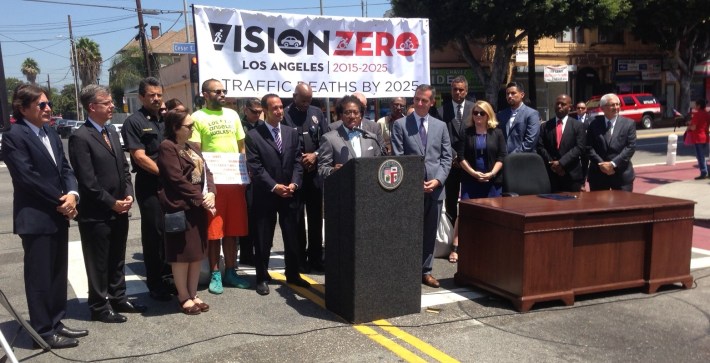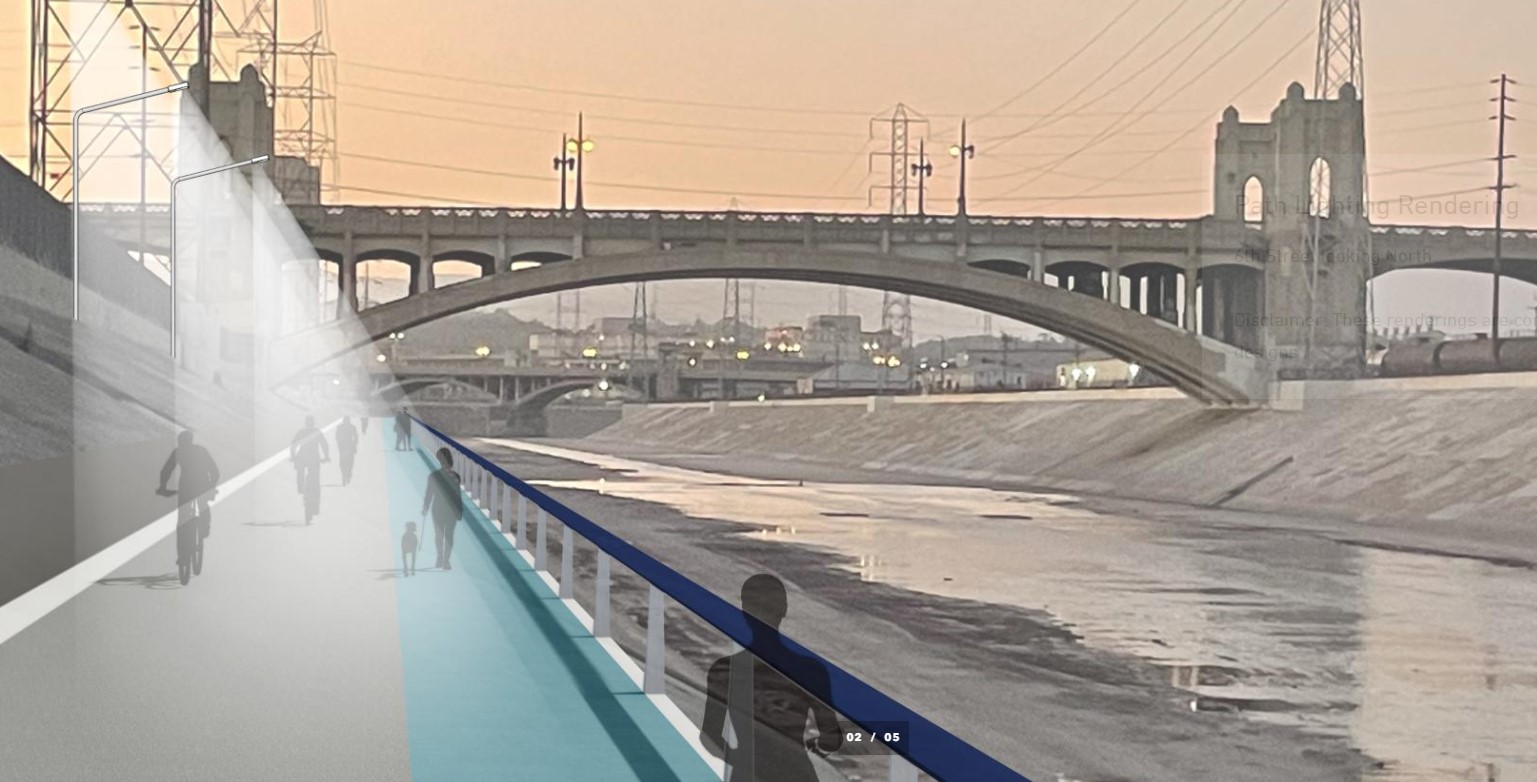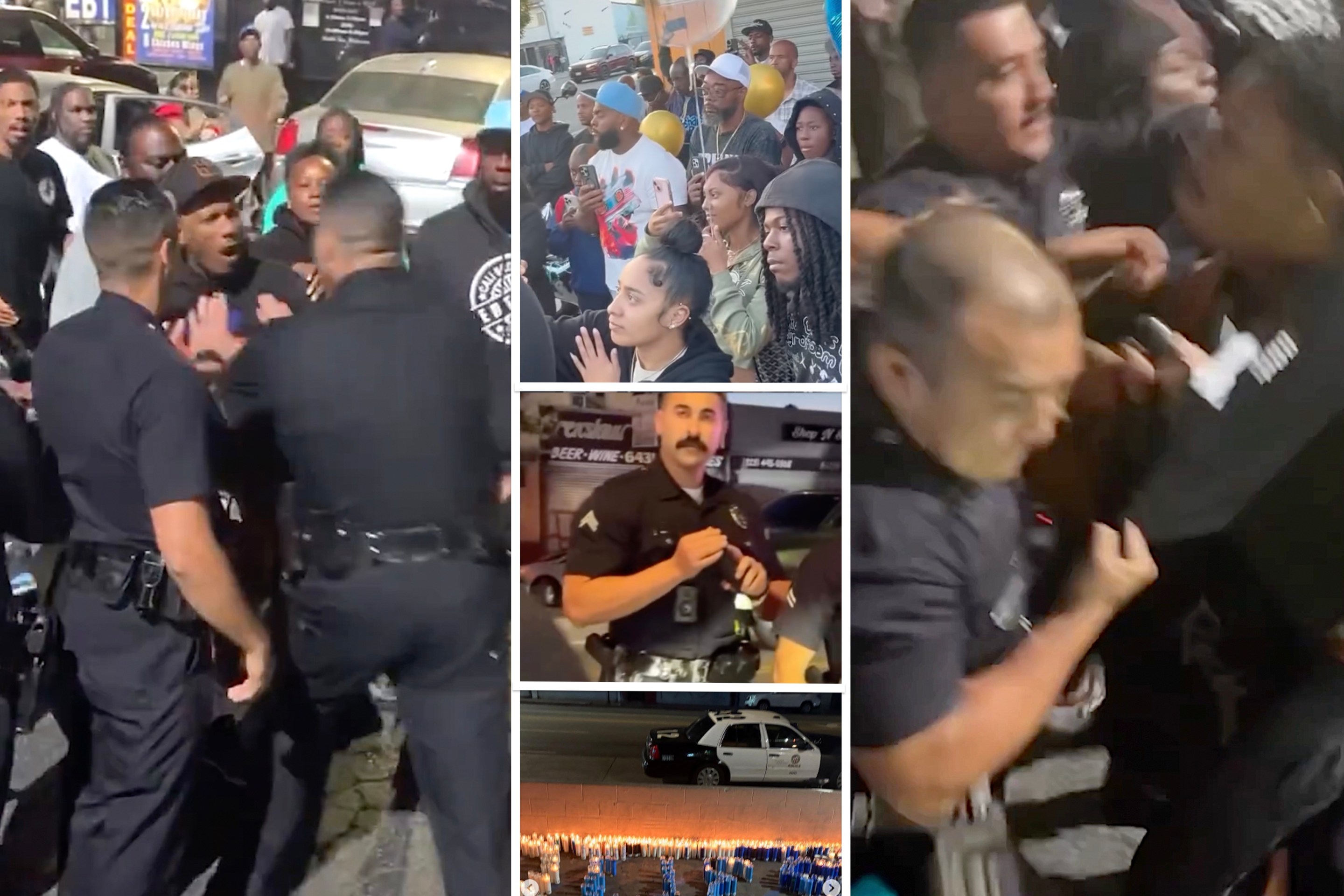
Today, Los Angeles Mayor Eric Garcetti signed a directive [PDF] that commits city departments to Vision Zero. Specifically, the City of Los Angeles is committed to reducing traffic fatalities to zero by the year 2025.
A little over a year ago, it was difficult to find Los Angeles agency staff, elected officials, or even individuals who were conversant on Vision Zero. In case readers are unfamiliar with Vision Zero, here is a description from the newly-formed Los Angeles Vision Zero Alliance:
Vision Zero is a worldwide movement, started in Sweden, to eliminate all traffic deaths. While traditional traffic safety campaigns have focused on changing human behavior to reduce accident risks, Vision Zero takes a fundamentally different approach by instead putting the responsibility on government to manage the streets using evidence-based strategies to prevent fatalities and serious injuries. Vision Zero is data-driven, outcome-focused, and collaborative across agencies and departments.
Today's directive follows on the heels of, and broadens, other recent L.A. City Vision Zero declarations. Last September, the Department of Transportation (LADOT) adopted Vision Zero as part of its departmental strategic plan. In April, Garcetti released an ambitious Sustainability "pLAn" that included Vision Zero. Earlier this month, the L.A. City Council approved Mobility Plan 2035; that approval made Vision Zero the adopted citywide policy for Los Angeles.
Prior to today, Vision Zero was largely confined to LADOT and City Planning (DCP). With this new directive, Garcetti broadens the city agencies responsible for implementing Vision Zero. In addition to LADOT and DCP, Garcetti explicitly names the Police, Fire, Public Works, and Water & Power departments to participate in an internal city of L.A. Vision Zero Steering Committee. In addition, the city will host a broader Vision Zero Task Force, to include city representatives, plus L.A. Unified School District, L.A. County Department of Public Health, Metro, non-profit advocates, and others.
Representing this broadening, Garcetti was flanked by City Councilmembers Mike Bonin and Mitch Englander, and high-ranking representatives from LAPD, LAFD, LADOT, and the Department of Public Works. Rounding out Vision Zero proponents joining the mayor were community groups including the Los Angeles County Bicycle Coalition, Los Angeles Walks, and others.
Garcetti's directive establishes an interim goal of reducing traffic fatalities by 20 percent by 2017.
Initial City of Los Angeles Vision Zero activity will focus on a High-Injury Network, billed as 6 percent of L.A. streets where 65 percent of all deaths and severe injuries take place. Find the city's High Injury Network mapped here. Additionally, the initial focus will be on pedestrians, especially old and young.
It is good news for Los Angeles' livable future with the city joining a growing number of North American cities that have embraced Vision Zero. Now that a great vision and concrete goals are in place, the devil could be in follow-through details. In other Vision Zero cities, including San Francisco and New York City, implementation sometime strays from the priorities that can really save lives and end traffic violence.
Los Angeles would never let local politics get in the way of safe streets, would it?






